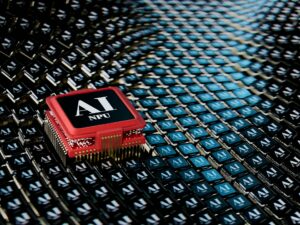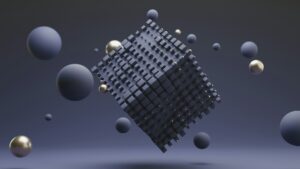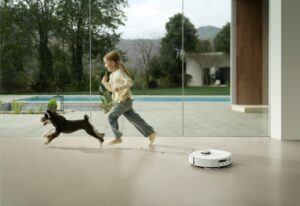Is it Possible for Artificial Intelligence to Replace Human Creativity in Art and Design?

Is it Possible for Artificial Intelligence to Replace Human Creativity in Art and Design?
The use of artificial intelligence (AI) has come a long way from its initial function as a tool for automating tasks and doing data analysis. In today’s world, artificial intelligence systems are capable of producing paintings, music compositions, poetry writing, and logo design with an astounding speed and quality. An significant discussion has been started as a result of the emergence of artificial intelligence in creative professions. Do you believe that AI can actually replace human creativity in art and design, or does it only complement it?
It is difficult to provide a straightforward response since creativity is not limited to the production of products that are aesthetically pleasing or practical; rather, it encompasses expression, emotion, cultural context, and the human experience. To have a better understanding of how artificial intelligence affects creativity, we need to look at both its powers and its limits.
The Increasing Role of Artificial Intelligence in Creative Industries
Tools that are driven by artificial intelligence have grown more important in the fields of art and design during the last decade. Generative artificial intelligence models such as DALL·E, MidJourney, and Stable Diffusion have the capability to generate unique visuals based on text prompts. Additionally, platforms like as Runway and Adobe Firefly provide assistance in the editing of videos and photographs. Artificial intelligence is used in the design process for the purpose of developing user interfaces, producing branding materials, and even designing architectural blueprints.
By allowing individuals with little to no formal training to make high-quality work, these technologies are democratizing creativity and making it more accessible to more people. It is now possible for someone who is not a designer to make graphics that have a professional appearance, and a writer may rapidly develop visuals that correspond to their tale.
The Ways in Which Artificial Intelligence Improves the Creative Process
1. The Generation of Ideas Quickly
Artificial intelligence has the ability to produce several versions of a notion in a matter of seconds, which enables designers and artists to explore new possibilities more rapidly.
2. Overcoming Obstacles to Creativity
Artificial intelligence has the ability to provide designers with new views by recommending patterns, color schemes, or layouts that they may not have considered before making their creations.
3. The effectiveness of the execution
It is possible to automate tasks such as removing backgrounds, improving photos, and making tweaks to layouts, which means that designers are free to concentrate on creative work.
4. Accessibility and inclusiveness of the area
Creativity is made more accessible to those who do not have formal training via the use of AI technologies, which in turn broadens involvement in creative and design sectors.
The Boundaries of Artificial Intelligence in Terms of Creativity
Comparing artificial intelligence to human creativity reveals that, despite its great capabilities, AI has fundamental limitations:
1. An absence of intentionality
Artificial intelligence does not produce with objective, meaningful, or emotional goal. Rather than being based on personal expression or experiences that have been experienced, its outputs are formed by patterns in the data.
2. Reliance on Data Gleaned from Training
AI is only capable of producing results that it has been taught on. Beyond the scope of its dataset, it is unable to generate cultural subtleties, personal recollections, or really creative notions and ideas.
3. Possibility of being homogenized
Considering that AI models are trained on enormous datasets of previously created works, it is possible that the outputs they generate may have a sense of being repetitive or derivative, without the distinctive voice of an individual artist.
4. Concerns Regarding Ethical Issues and Copyright
Artificial intelligence often acquires knowledge from works that are protected by intellectual property rights without the owner’s consent, which raises ethical and legal concerns around originality and ownership.
5. The Human Factor in Creative Processes
Human creativity is inextricably linked to narrative, emotional depth, and cultural context; these are characteristics that cannot be replicated by artificial intelligence. Just one example:
- Empathy, morals, and personal passion are the three things that a designer pulls from while developing a campaign for a social cause.
- When an artist paints from a place of pleasure or despair, they are able to convey feelings that artificial intelligence is unable to experience.
- Identity is woven throughout the work of a fashion designer who is influenced by cultural history in ways that artificial intelligence is unable to duplicate in a genuine manner.
- An investigation of identity, meaning, and expression that artificial intelligence is unable to genuinely feel is what constitutes creativity. Creativity is not simply the output but also the process.
There is no substitute for collaboration.
Artificial intelligence should be considered as a tool for collaboration rather than as a substitute for human innovation. A great number of designers and artists are already using artificial intelligence as a co-creator, combining human aim with the capabilities of machines.
Just one example:
- AI might be used by a digital artist to develop idea drawings, which would subsequently be refined manually by the artist.
- The application of artificial intelligence allows architects to offer numerous design concepts before selecting one to develop further.
- As a means of generating new compositions, musicians experiment with melodies that are created by artificial intelligence.
- In situations like these, artificial intelligence improves efficiency and broadens the creative options available, but humans continue to be the source of vision, meaning, and emotional resonance.
The Danger of Relying In Excessively
There is a fear that an over dependence on AI might potentially water out creativity. There is a possibility that we may see an increase in the production of generic, algorithm-driven art and design if companies and artists rely excessively on automated technologies. It will be difficult to ensure that human voices continue to play a prominent role, with artificial intelligence serving more as a supplement than a replacement.
What the Future Holds for Artificial Intelligence and Creativity
The interaction between artificial intelligence and creativity is expected to develop into a symbiotic partnership in the future. The artificial intelligence will grow more intuitive, providing ideas based on context and understanding the creative tastes of individuals. While this is going on, society will have to figure out how to handle issues with authorship, intellectual property, and ethics in relation to work created by AI.
We could reach a stage when creative industries differentiate between art that is generated by humans and art that is created by artificial intelligence. This would be analogous to the way that photography and painting are valued differently despite the fact that both are forms of visual art.
AI has shown that it is a strong force in the fields of art and design, with the ability to generate creative outputs that are both stunning and helpful. On the other hand, it does not and cannot replace the fundamental nature of humans’ creative abilities. True creativity is based on feelings, culture, and purpose, all of which are intangible components that cannot be replicated by computers.
When it comes to the subject of whether or not artificial intelligence can replace human creativity, the more pertinent inquiry is how humans might use AI to broaden their creative horizons. Using artificial intelligence in a sensible manner may serve as a partner, generating new ideas and speeding up implementation. Meanwhile, people are responsible for ensuring that creativity continues to be meaningful, expressive, and truly human.




